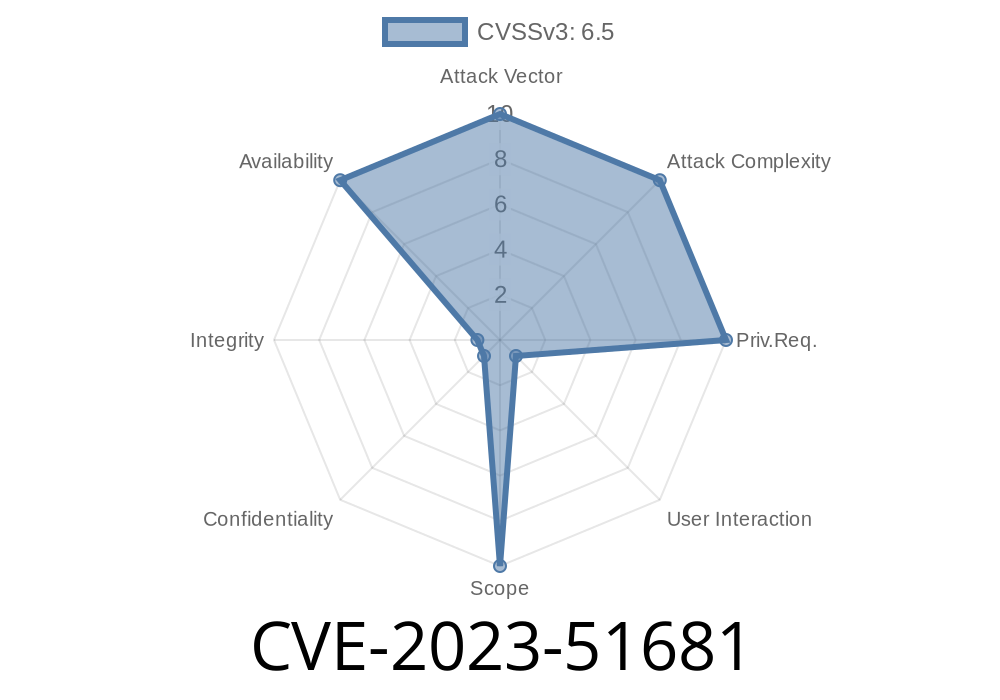In this post, we will explore the Cross-Site Request Forgery (CSRF) vulnerability that affects multiple versions of the Duplicator WordPress Migration & Backup Plugin. You'll learn what the vulnerability is, why it's potentially dangerous for your WordPress site, and how to fix it by patching your plugin version. We will also share some best practices to prevent this issue from happening in the future.
Introduction
Cross-Site Request Forgery (CSRF) is a type of cyberattack where an attacker tricks users into performing unwanted actions on a website they are currently authenticated on. This exploit targets the Duplicator Plugin for WordPress, which is used by numerous websites to create backups, duplicate, and migrate WordPress installations. The Duplicator Plugin is affected by this CSRF vulnerability in versions up to 1.5.7.
For comprehensive information on this vulnerability, please refer to the official CVE website's entry: CVE-2023-51681.
Understanding the Vulnerability
The CSRF vulnerability in Duplicator Plugin can be exploited by attackers to compromise the security of a WordPress site, gain unauthorized access, or perform administrative actions without the user's consent. The attacker can embed malicious content in a seemingly harmless link or website, tricking users into clicking on it. Once clicked, it will execute the attacker's pre-defined instructions, potentially compromising the WordPress installation or the user's data.
For a more detailed explanation of CSRF, refer to the OWASP's article on Cross-Site Request Forgery (CSRF).
The following code snippet from the Duplicator Plugin is where the vulnerability exists
// duplicator.php
add_action('wp_ajax_duplicator_package_active', 'duplicator_package_active');
add_action('wp_ajax_duplicator_package_create', 'duplicator_package_create');
add_action('wp_ajax_duplicator_package_default_name', 'duplicator_package_default_name');
Here, the plugin registers AJAX actions without proper nonce verification. This makes it an easy target for CSRF attacks.
How to Fix the CSRF Vulnerability in the Duplicator Plugin
To fix the CSRF vulnerability in the Duplicator Plugin, you must first update the plugin to the latest version. Developers of the plugin have addressed the issue in the version 1.5.8 and beyond. Follow these steps to update the plugin:
Click on the 'Update Now' link (if available).
If you cannot update the plugin via the WordPress dashboard, download the latest version from the official Duplicator Plugin page and follow the manual update instructions.
Once updated, the plugin should incorporate proper nonce verification, thus eliminating the CSRF vulnerability.
Best Practices for Avoiding CSRF Vulnerabilities
1. Update All Plugins and Themes: Keep all your WordPress plugins and themes up to date, as developers regularly release security patches and updates to protect against known vulnerabilities.
2. Implement Strong Password Policies: Use strong, unique passwords for your WordPress accounts to prevent unauthorized access.
3. Use Security Plugins: Consider using a security plugin (e.g., Wordfence, Sucuri) to scan and protect your website from potential threats.
4. Limit Access to Sensitive Information: Restrict access to sensitive data and administrative areas only to trusted individuals.
5. Conduct Regular Security Audits: Perform periodic security audits of your website to identify and fix any vulnerabilities.
Conclusion
The CVE-2023-51681 CSRF vulnerability in the Duplicator WordPress Plugin poses a risk to numerous websites. Updating the plugin to the latest version is the immediate solution to minimize the risk of a potential CSRF attack. Moreover, adopting the best practices outlined above can help you maintain a more secure and resilient WordPress site against a variety of potential threats.
Timeline
Published on: 02/28/2024 17:15:07 UTC
Last modified on: 02/29/2024 13:49:47 UTC
